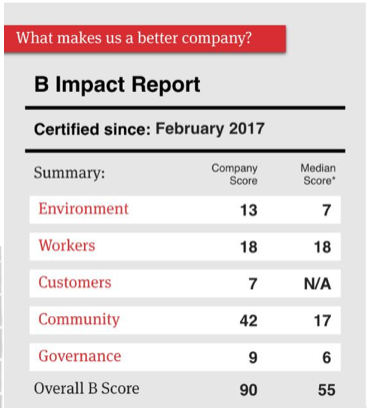
Skiers and riders know rising temperatures are leading to warmer and shorter winters. This past season was characterized by uneven seasonal snowfall, decreased snowpack, and loss of ice cover on the Great Lakes. Ski industry associations and resorts are working to combat global warming, advocating for renewable energy and aiming to be better stewards of the environment. Industry-wide initiatives are effectively changing best practices and lowering greenhouse gas emissions.
“Evidence of the climate crisis was seen across the country, from extreme snow events to broken heat records. And the ski industry is addressing this challenge head-on,” Kelly Pawlak, the National Ski Area Association’s (NSAA) President, said in the 2023 Sustainable Slopes Annual Report. NSAA’s Sustainable Slopes (2000) and Climate Challenge (2013) programs are committed to supporting sustainable priorities in all aspects of resort management. The initiatives help over 200 ski areas reduce costs through energy-saving projects, technical support, grants, and advocacy efforts for renewable energy.
The NSAA, along with other ski areas, has also joined America Is All In; comprised of over 5,000 members, the group is committed to 50% emissions reductions by 2030.
“America Is All In is the most expansive coalition of leaders ever assembled in support of climate action in the United States. The coalition is working alongside the federal government to develop a national climate strategy that meets the urgency of the climate crisis, scaling climate action around the country to empower workers and communities, and promoting the leadership of non-federal actors on the world stage,” the NSAA states on its website.
- Related Article: U.S. Ski Industry Set to Lose Billions Due to Climate Change

The Elektron Solar Project is a timely example of how collaboration produces results. Salt Lake City’s Climate Positive 2040 plan was the catalyst for the work. Three local governments (Salt Lake City, Park City, and Summit County), one higher-education institution (Utah Valley University), and two ski resorts (Park City Ski Resort and Deer Valley Ski Resort) were involved. The project built one of the largest solar generators connected to the Rocky Mountain Power system.

Planning started in 2019, with construction beginning in October 2021; issues with sourcing solar panels caused delays in their timeline to completion. The Project will help Salt Lake City achieve net 100% renewable electricity for government operations by 2030. 80% of Deer Valley’s and 100% of Park City Ski Resort’s electricity will now be solar-powered. Park City buses, street lights, and other operations will also use electricity provided by the project, according to Mayor Nann Worel.

The Elektron Solar Project illustrates how industry competitors like Alterra and Vail Resorts can collaborate with non-industry partners to support their corporate policies. “Climate action is the cornerstone of our commitment to sustaining our mountain communities,” Darcie Renn, Alterra’s Vice-President for Sustainability, writes in the 2023 Forward Stance Annual Impact Report. “The company is ahead of schedule to meet its emissions goals,” states Kirsten Lynch, CEO of Vail Resorts, in their 2023 Annual Report. Shared policies include reducing carbon emissions, transitioning to renewable energy sources, reducing landfill waste, and reforestation.

Participating in the Elektron Solar Project prepared Alterra and Vail to work together with other ski industry partners. In 2021, Alterra, Boyne Resorts, POWDR, and Vail formed The Mountain Collaborative for Climate Action to fight climate change. Their Climate Collaborative Charter details their shared commitments to sustainability and advocacy for renewable energy.

“POWDR believes collaboration is essential in fighting climate change. It allows for a greater scale of impact, accomplished by pooling resources and sharing knowledge. Having the four largest ski resort operators in North America using a single platform strengthens our advocacy efforts and the ability to influence policy change,” writes Raj Basi, Vice President for Sustainability, responding to SnowBrains’s request for comment.

Independent operators are also finding ways to shrink their carbon footprint and document their efforts and results. Taos Ski Valley is the first American ski resort to receive B Corp Certification. They must meet performance, accountability, and transparency standards measured by B Lab. Mountain initiatives include using waste oil for heating, snow farming, converting food waste into soil amendment, which improves water retention, and working with the Rio Grande Water Fund on reforestation.

The NSAA Golden Eagle Awards for Sustainability highlight best practices and are awarded to ski areas for their performance. 2024 award recipients include Taos, Boyne, and Vail Resorts.
Ski industry leadership serves as a good model for other businesses. The Elektron Solar Project shows how a multi-partner group can design, construct, and implement a large-scale renewable energy initiative that supplies power to both ski areas and local governments for everyone’s use. Industry efforts like NSAA’s programs or the Mountain Collaborative for Climate Action reinforce the importance of competitors working together to support shared goals. Participating in America Is All In expands the collaboration to other industries with a vested interest in reducing their carbon footprint.
Skiers and riders can participate in these efforts by supporting resorts working to reduce greenhouse gas emissions and minimize the industry’s environmental damage. Impactful changes are occurring through regional and local initiatives. Winter sports enthusiasts know that a warming planet threatens both our existence and sports. We need to continue to lead the charge to make lasting changes to help the health of the planet.